Abstract
The ability of mouse antiserum obtained early after immunization to induce passive cutaneous anaphylaxis (PCA) using a short (4 hours) and a long (72 hours) latent period was studied. It was observed that the ability of an antiserum to induce PCA reactions after a short latent period is not correlated with its ability to induce PCA reactions after a long latent period. Furthermore PCA reactions induced 4 hours after sensitization are not abolished by heating of antisera and are completely prevented by mepyramine whereas PCA reactions induced 72 hours after sensitization are completely abolished by heating but are not prevented by mepyramine. It is suggested that antiserum obtained from mice a few days after a single dose of antigen contains at least two biologically distinct antibodies.
Full text
PDF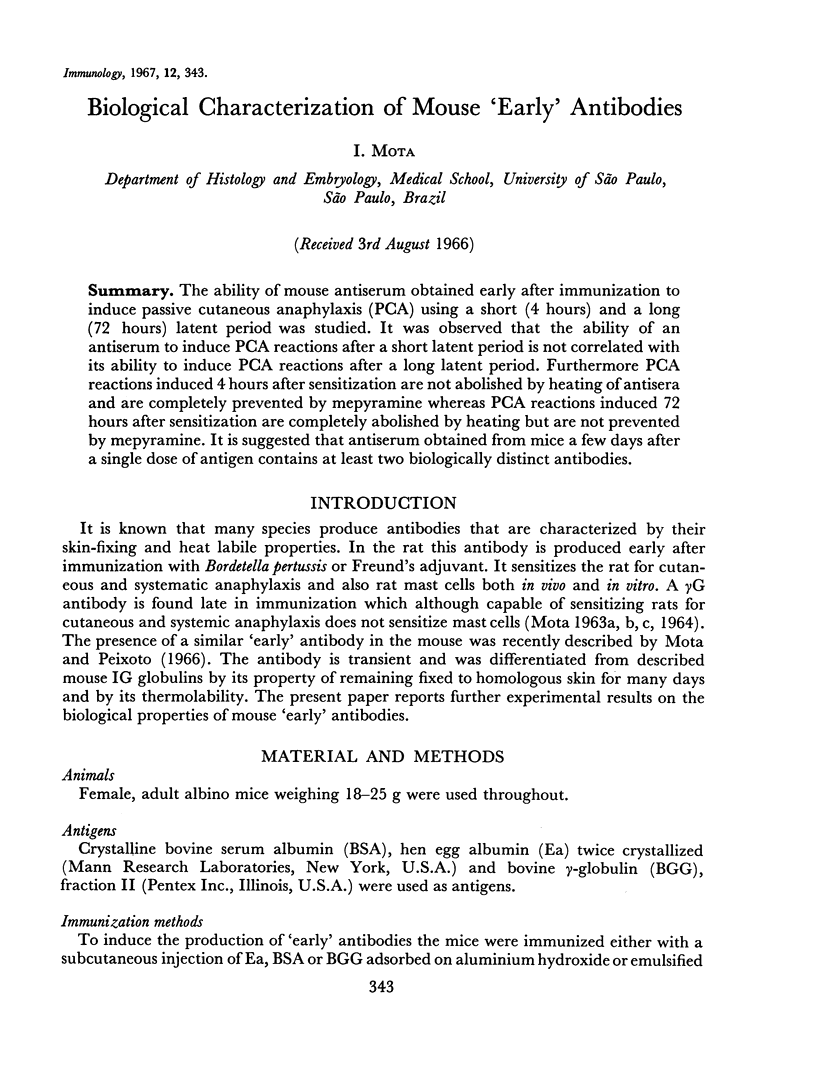
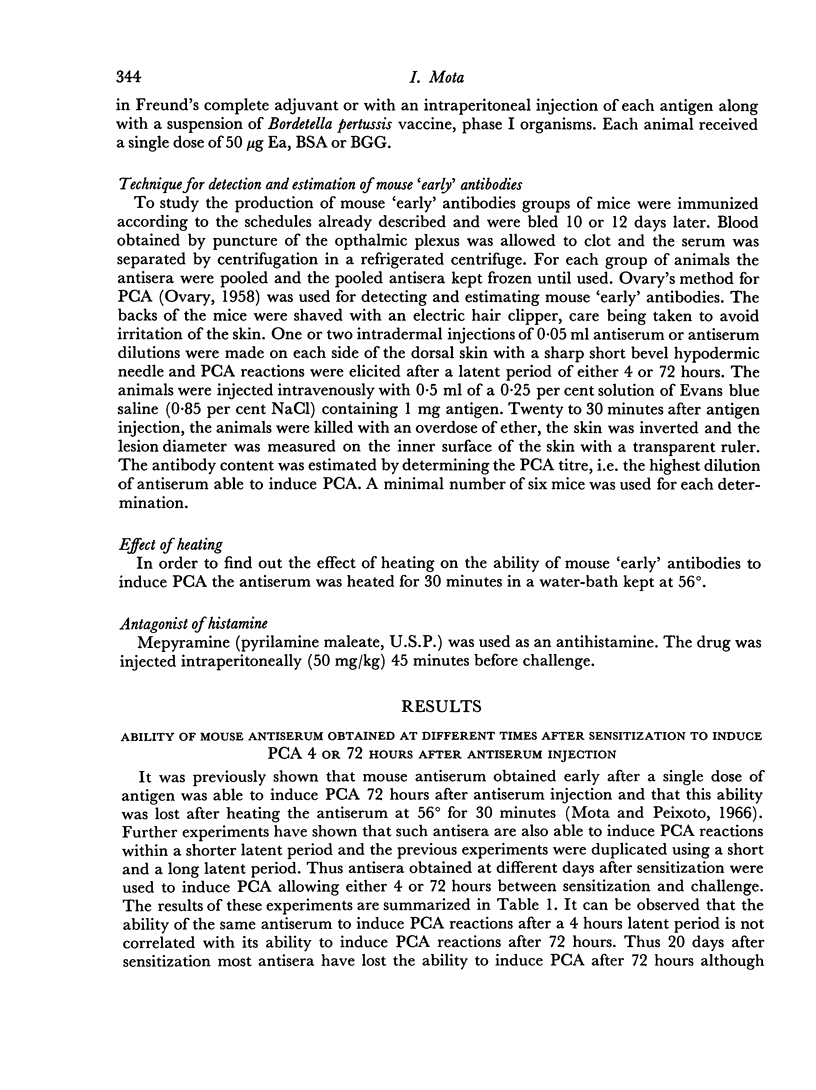
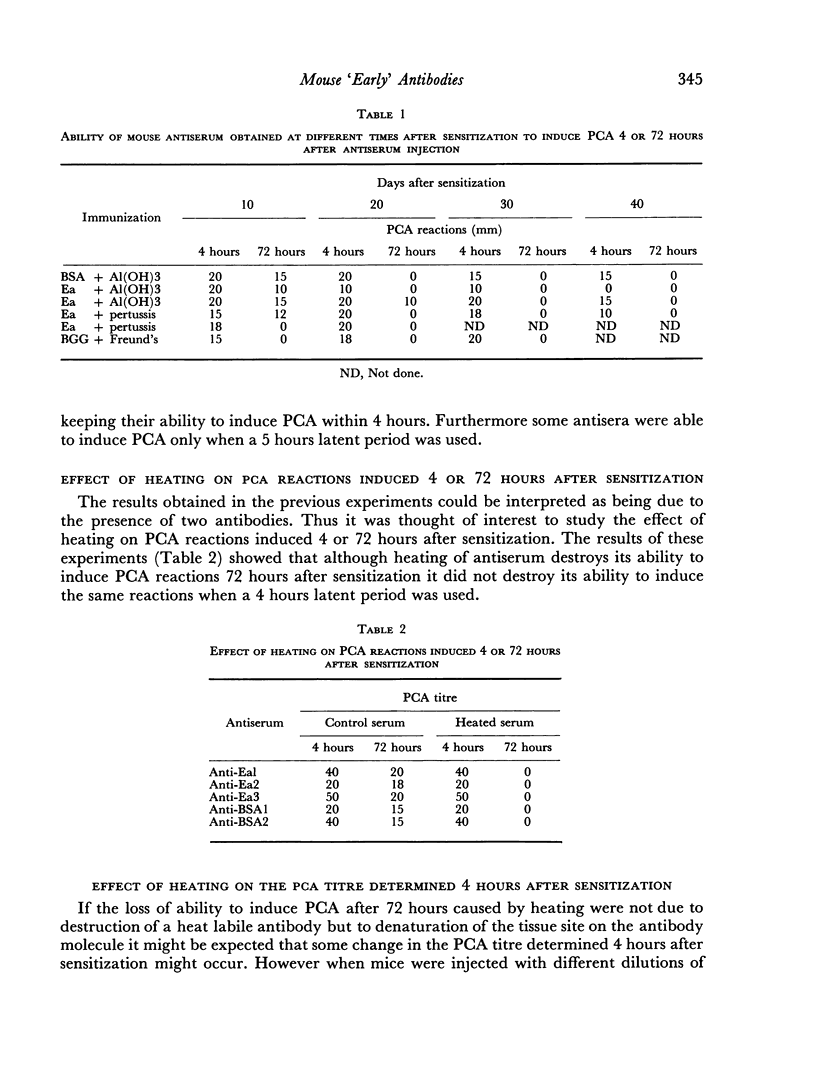
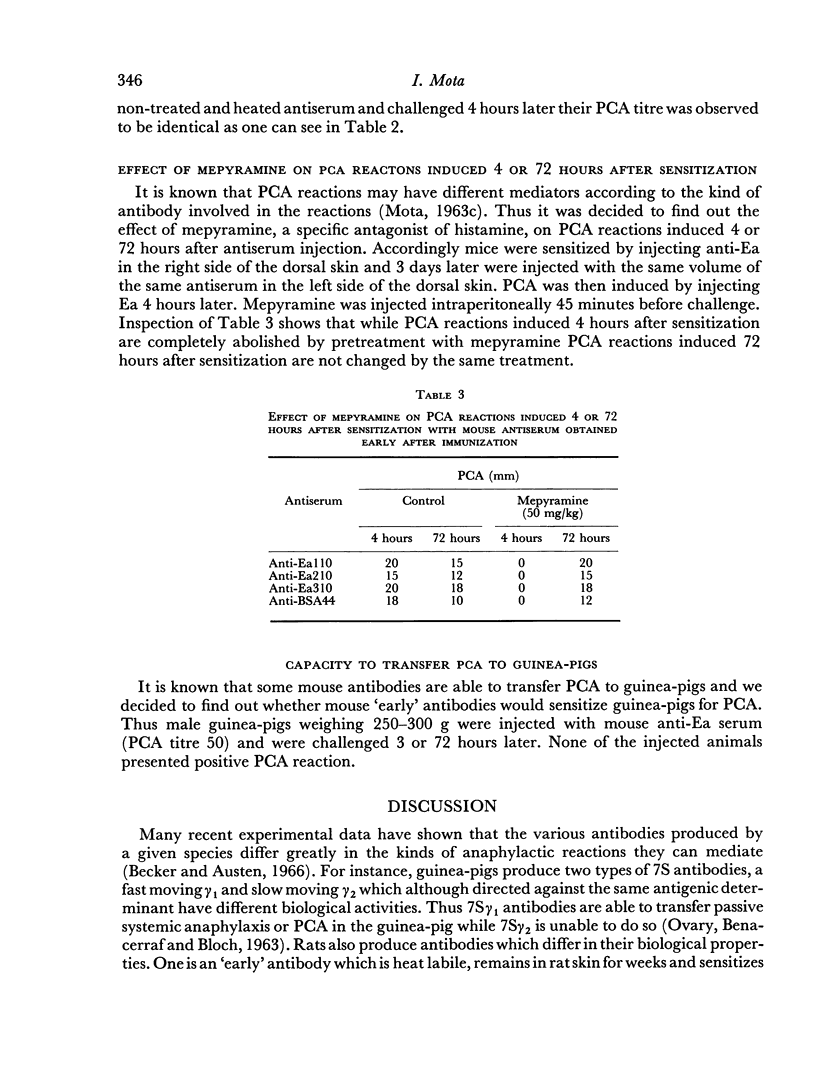
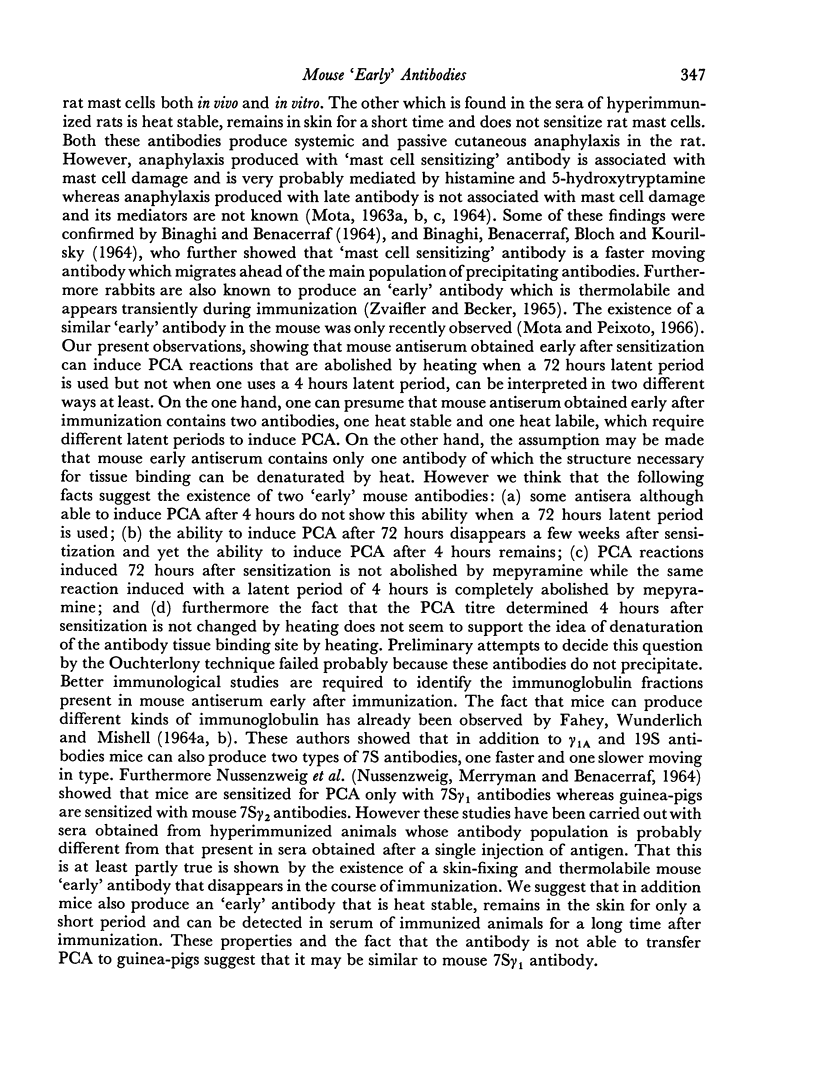

Selected References
These references are in PubMed. This may not be the complete list of references from this article.
- BINAGHI R. A., BENACERRAF B., BLOCH K. J., KOURILSKY F. M. PROPERTIES OF RAT ANAPHYLACTIC ANTIBODY. J Immunol. 1964 Jun;92:927–933. [PubMed] [Google Scholar]
- BINAGHI R. A., BENACERRAF B. THE PRODUCTION OF ANAPHYLACTIC ANTIBODY IN THE RAT. J Immunol. 1964 Jun;92:920–926. [PubMed] [Google Scholar]
- FAHEY J. L., WUNDERLICH J., MISHELL R. THE IMMUNOGLOBULINS OF MICE. II. TWO SUBCLASSES OF MOUSE 7S GAMMA-2-GLOBULINS: GAMMA-2A- AND GAMMA-2B-GLOBULINS. J Exp Med. 1964 Aug 1;120:243–251. doi: 10.1084/jem.120.2.243. [DOI] [PMC free article] [PubMed] [Google Scholar]
- MOTA I. PASSIVE CUTANEOUS ANAPHYLAXIS INDUCED WITH MAST CELL-SENSITIZING ANTIBODY. THE ROLE OF HISTAMINE AND 5-HYDROXYTRYPTAMINE. Life Sci. 1963 Dec;12:917–927. doi: 10.1016/0024-3205(63)90060-2. [DOI] [PubMed] [Google Scholar]
- MOTA I. THE MECHANISM OF ANAPHYLAXIS. I. PRODUCTION AND BIOLOGICAL PROPERTIES OF 'MAST CELL SENSITIZING' ANTIBODY. Immunology. 1964 Nov;7:681–699. [PMC free article] [PubMed] [Google Scholar]
- Mota I., Peixoto J. M. A skin-sensitizing and thermolabile antibody in the mouse. Life Sci. 1966 Sep;5(18):1723–1728. doi: 10.1016/0024-3205(66)90108-1. [DOI] [PubMed] [Google Scholar]
- NUSSENZWEIG R. S., MERRYMAN C., BENACERRAF B. ELECTROPHORETIC SEPARATION AND PROPERTIES OF MOUSE ANTIHAPTEN ANTIBODIES INVOLVED IN PASSIVE CUTANEOUS ANAPHYLAXIS AND PASSIVE HEMOLYSIS. J Exp Med. 1964 Aug 1;120:315–328. doi: 10.1084/jem.120.2.315. [DOI] [PMC free article] [PubMed] [Google Scholar]
- OVARY Z., BENACERRAF B., BLOCH K. J. Properties of guinea pig 7S antibodies. II. Identification of antibodies involved in passive cutaneous and systemic anaphylaxis. J Exp Med. 1963 Jun 1;117:951–964. doi: 10.1084/jem.117.6.951. [DOI] [PMC free article] [PubMed] [Google Scholar]
- OVARY Z. Passive cutaneous anaphylaxis in the mouse. J Immunol. 1958 Oct;81(4):355–357. [PubMed] [Google Scholar]


